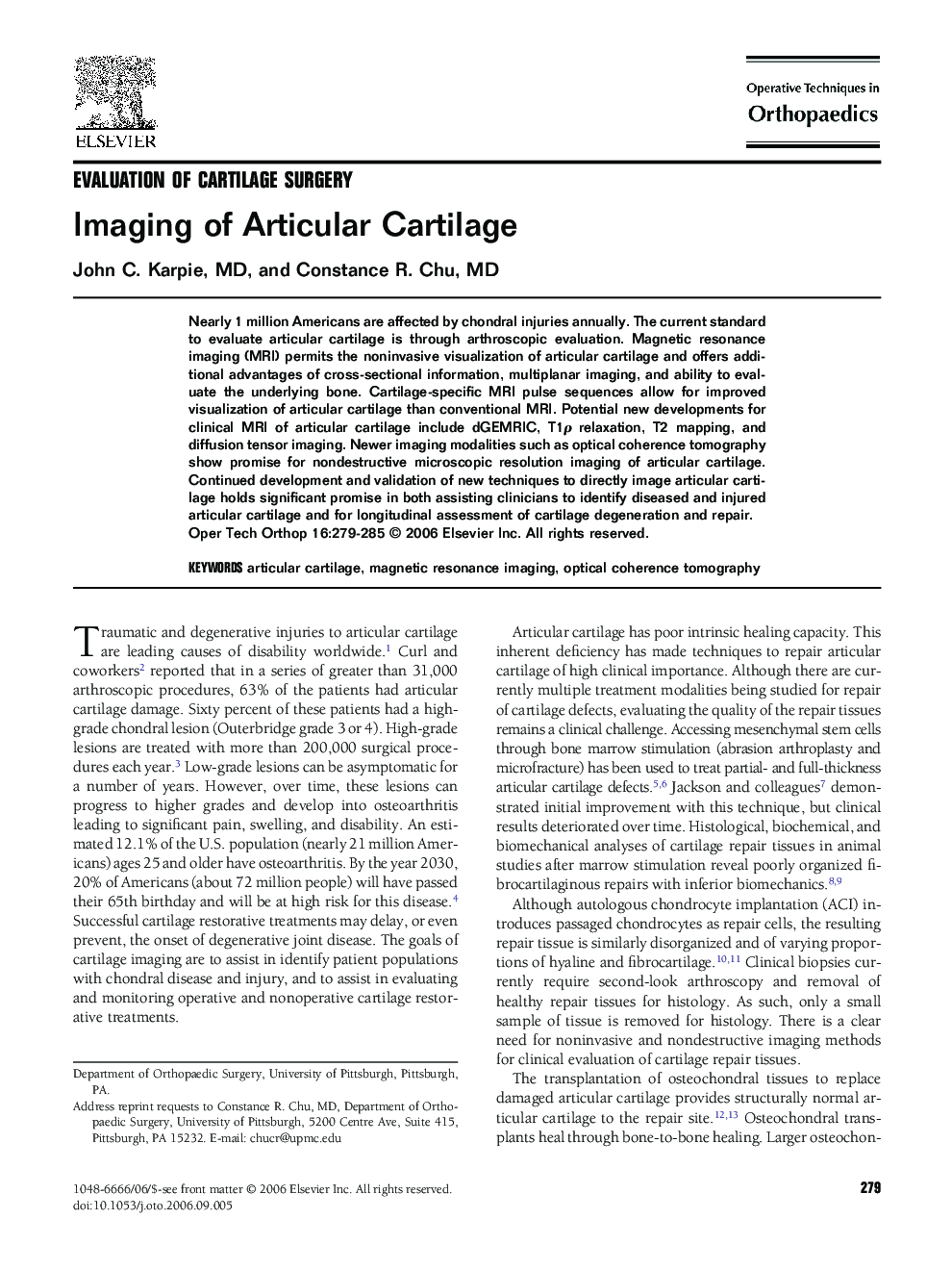| Article ID | Journal | Published Year | Pages | File Type |
|---|---|---|---|---|
| 4079391 | Operative Techniques in Orthopaedics | 2006 | 7 Pages |
Abstract
Nearly 1 million Americans are affected by chondral injuries annually. The current standard to evaluate articular cartilage is through arthroscopic evaluation. Magnetic resonance imaging (MRI) permits the noninvasive visualization of articular cartilage and offers additional advantages of cross-sectional information, multiplanar imaging, and ability to evaluate the underlying bone. Cartilage-specific MRI pulse sequences allow for improved visualization of articular cartilage than conventional MRI. Potential new developments for clinical MRI of articular cartilage include dGEMRIC, T1Ï relaxation, T2 mapping, and diffusion tensor imaging. Newer imaging modalities such as optical coherence tomography show promise for nondestructive microscopic resolution imaging of articular cartilage. Continued development and validation of new techniques to directly image articular cartilage holds significant promise in both assisting clinicians to identify diseased and injured articular cartilage and for longitudinal assessment of cartilage degeneration and repair.
Related Topics
Health Sciences
Medicine and Dentistry
Orthopedics, Sports Medicine and Rehabilitation
Authors
John C. MD, Constance R. MD,
